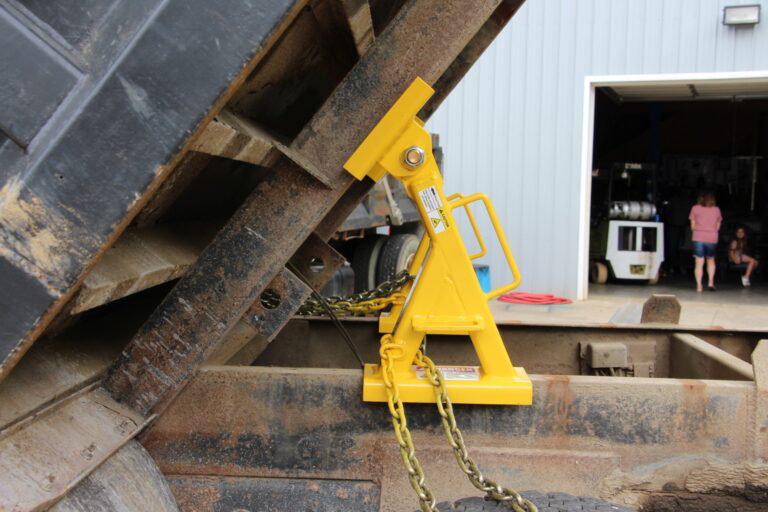Dump trucks are essential for hauling large quantities of gravel, sand, and debris in the construction industry.
However, they pose significant safety hazards due to their size and power. Providing safety training for dump truck repair crews is not just recommended; it’s crucial for ensuring the well-being of the workforce and the overall success of the business.
Understanding the Risks
Dump truck repair technicians face a variety of potential hazards on the job. Here are some of the most common:
- Pinch points and crush zones: Dump trucks have numerous pinch points where limbs can get caught during repairs. Hydraulic systems also pose a serious risk of crushing if not properly secured.
- Falling objects: Tools, parts, and debris can fall from the truck bed or during repairs, causing serious injuries.
- Slips, trips, and falls: Uneven surfaces, grease spills, and weather conditions can all lead to slips and falls.
- Exposure to hazardous materials: Dump trucks may have come into contact with hazardous materials like asbestos or lead paint, requiring specific safety protocols during repairs.
- Electrocution: Electrical components on dump trucks pose a risk of electrocution if not handled properly.
The Benefits of Safety Training
Investing in safety training for dump truck repair crews provides a wealth of benefits for both your employees and your company:
- Reduced Risk of Injuries: Proper training equips workers with the knowledge and skills to identify and avoid hazards, significantly reducing the risk of accidents and injuries. A healthy workforce not only suffers less physical pain and emotional distress but also experiences less downtime due to injuries, leading to increased productivity.
- Improved Morale: When employees feel safe and valued by their employer, morale improves. Knowing that the company prioritizes its safety fosters trust and loyalty, contributing to a more positive work environment.
- Reduced Costs: Accidents and injuries can be incredibly expensive, leading to lost workdays, medical bills, and potential lawsuits. Safety training is a proactive approach that can significantly reduce these costs.
- Enhanced Compliance: OSHA (Occupational Safety and Health Administration) has specific regulations regarding worker safety in the construction industry. Safety training ensures your company is compliant with these regulations, avoiding potential fines and penalties.
What Should Safety Training Cover?
Safety training for dump truck repair crews should be comprehensive and cover a variety of topics, including:
- Hazard identification and risk assessment: Teaching workers to recognize potential hazards in their work environment and how to assess the level of risk associated with each hazard.
- Lockout/tagout procedures: Ensuring workers understand how to properly isolate and de-energize equipment before performing maintenance or repairs.
- Personal Protective Equipment (PPE) requirements: Training on the proper selection, use, and care of PPE, such as gloves, safety glasses, respirators, and steel-toed boots.
- Fall prevention: Techniques for working safely at heights, proper use of ladders and scaffolding, and how to avoid slips and trips.
- Safe lifting practices: Proper lifting techniques to prevent back injuries and other musculoskeletal disorders.
- Electrical safety: Understanding the dangers of electricity and how to work safely with electrical components.
- Emergency procedures: How to respond to emergencies such as fires, spills, and medical incidents.
- Communication protocols: The importance of clear and concise communication between team members to ensure everyone is aware of potential hazards and actions being taken.

Invest in the safety of your dump truck repair crews! Explore BedLock Safety Products, LLC, a leading truck repair safety equipment manufacturer. We offer a comprehensive range of truck safety equipment, including industry-trusted dump truck bed safety stands.
Contact us today and prioritize a safe work environment for your team.
